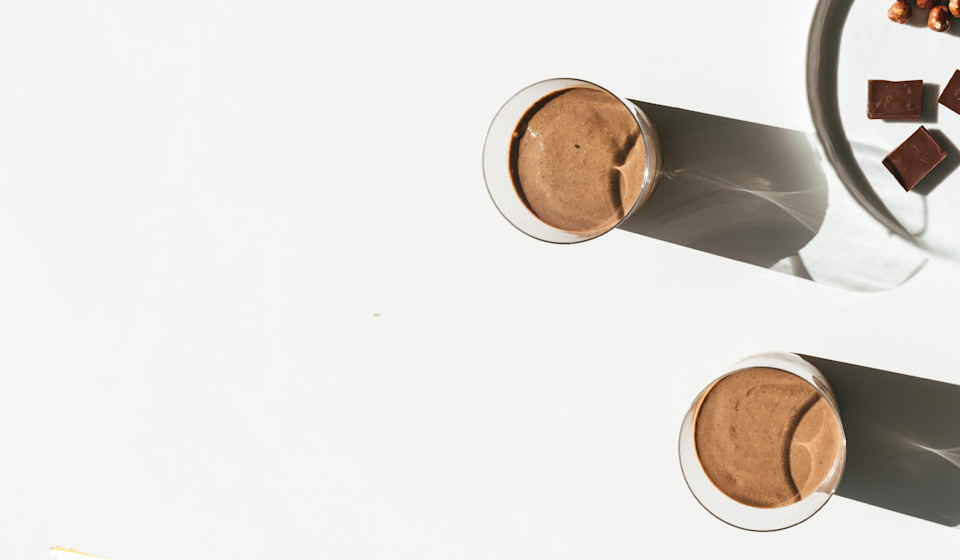Essential Takeaways
• Intuitive eating is an evidence-based, non-diet approach to eating that encourages getting in tune with our bodies’ hunger cues and refraining from labeling foods as “good” or “bad”.
• Intuitive eating has been shown to support mindfulness and even improved body image.
There are a lot of diets out there, and many can be hard to make into a lifestyle—one study spanning 15 years found that adults typically stick to a diet for between approximately 3 and 6 weeks before stopping. (1)
Science has shown us that the most beneficial nutrition program for each individual is the one they can stick to—and we like to think that there’s a way to make healthy choices in a way we can not only sustain throughout our lives, but also enjoy.
Enter intuitive eating, the food philosophy that emphasizes listening to our body’s hunger and fullness cues and rejecting traditional diet culture. It’s an approach with powerful scientific support behind it, pointing to the method’s emphasis on mindfulness and positive body image. Read on to learn more about how the principles of intuitive eating and gentle nutrition work.
What Is Intuitive Eating?
Intuitive eating is an evidence-based approach to eating that asks us to do one thing: make peace with all types of food. In intuitive eating, there are no good or bad foods—we eat based on what our bodies tell us. Intuitive eating means eating when we are hungry and paying attention to when we feel full. It means being kind to ourselves. It means really enjoying our food.
Ultimately, intuitive eating is a practice of mindfulness. Among the some 337 studies about intuitive eating conducted in the last ten years, one concept stands out as central to the method: interoceptive awareness. According to a 2018 study, interoception is the perception of sensations from inside the body, from physical sensations like touch to nervous system activity like emotions. As the study points out, much of these perceptions remain unconscious, but what does become conscious (aka interoceptive awareness) involves the “processing of inner sensations so that they become available to conscious awareness”. That means that when eating intuitively, you pay attention to your hunger, fullness, and cravings to find satisfaction how you need it. Science shows us that this mindfulness “facilitates regulation and an integrated sense of self, and thus contributes to health and well-being”. (5)
You might be wondering: If I've been craving a lot of one type of food... how can I be sure I’m getting all the right nutrients? While it’s unlikely you’ll encounter any major nutritional shortfalls while eating intuitively since our bodies tend to tell us what it needs and our Essential Multivitamins are here to support nutrient gaps.*
The 10 Principles of Intuitive Eating
1. Reject the diet mentality: stop worrying about what diet culture says.
2. Honor hunger: notice hunger cues and keep the body biologically fed with adequate energy and carbohydrates.
3. Make peace with food: give ourselves unconditional permission to eat—no food is forbidden.
4. Challenge the food police: say “no” to thoughts that make food choices a moral matter.
5. Discover the satisfaction factor: take pleasure in what (and where) you eat.
6. Feel the fullness: listen to and trust the signals the body sends that say “I’m full”.
7. Cope with emotions with kindness: recognize that emotions happen when it comes to food, and that’s okay. Find ways to self-soothe and nurture those emotions.
8. Respect the body: accept your genetic blueprint—we would never expect ourselves to fit into a drastically different shoe size, so we should try not to expect huge changes in our body’s set point.
9. Movement—feel the difference: this one is less about regimented exercise and more about simply getting active and enjoying how it feels to move our body.
10. Honor our health—gentle nutrition: make choices with food that honor our health and our taste buds, but don’t worry about eating “perfectly”.
The Benefits of Intuitive Eating
There are both mental and physical benefits to intuitive eating. When we eat intuitively, we’re focusing on feeling in tune with our body, and research has shown that this awareness has positive impacts on our body image and body acceptance—and when we’re more accepting of our body, intuitive eating has also been shown to be easier to adopt. (7)
You might be wondering how eating intuitively might impact your fitness routine, too. When it comes to working out, the principles of intuitive eating still stand—stay in tune with the body and do what the body needs, even if it’s nothing. With an intuitive eating mindset, there’s no need to force yourself to do HIIT or cardio all the time. Movement is generally a good thing, but if you need a rest day, the science behind intuitive eating says: take one.
The Takeaway
Intuitive eating is a gentler, more present way to approach how we eat and take care of ourselves. There’s a place in our diet for all kinds of food, and our bodies do have ways of letting us know what they want. Along the way, Essential Multivitamins are always here to support nutrient gaps.* Happy intuitive eating!










